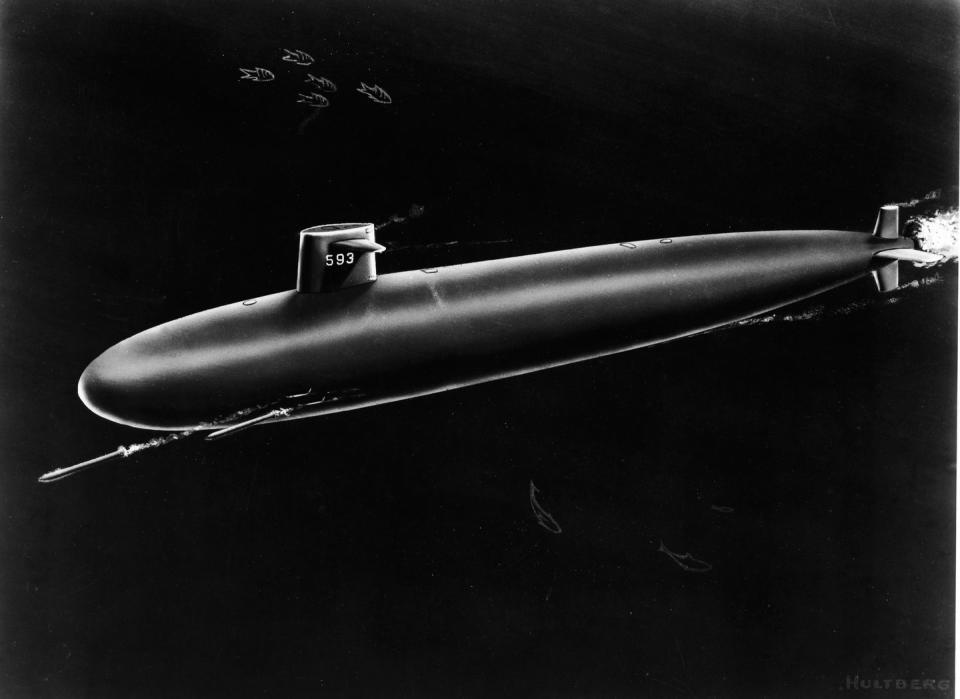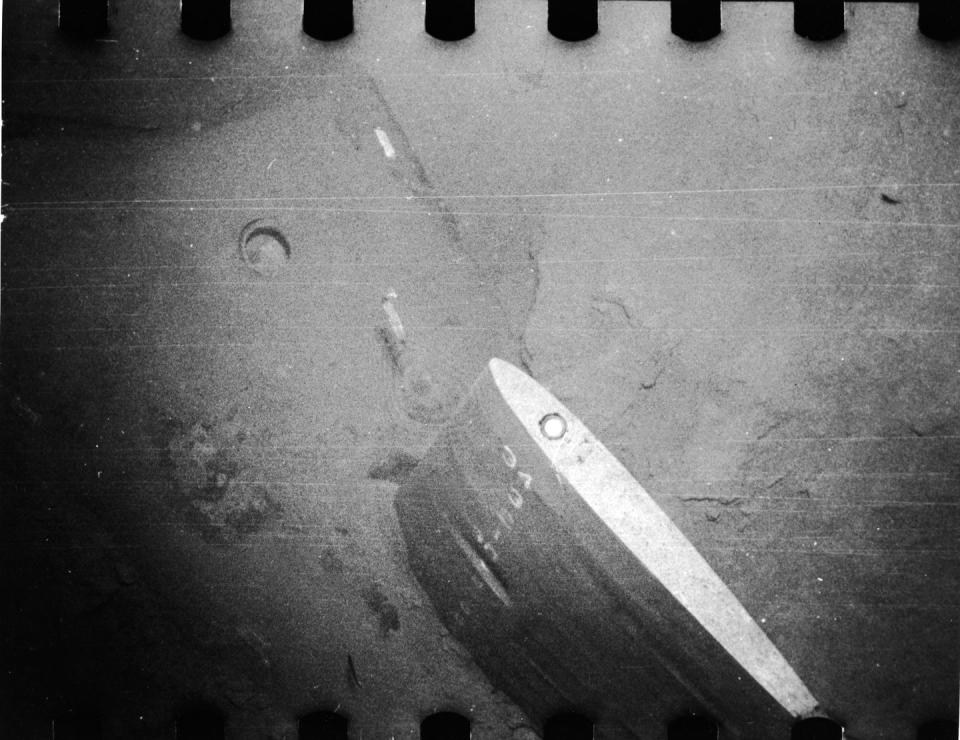Why Did the USS Thresher Sink? Finally, the Navy Is Being Forced to Tell Us

A retired U.S. Navy submarine commander sued the Navy to release an official report on the sinking of the USS Thresher—and won.
Thresher sank in April 1963, lost with all hands, but there has never been an official explanation as to why.
The loss of Thresher lead to an improved culture of safety in the Navy, and since 1968, the service hasn’t lost a single submarine.
A retired U.S. Navy submarine commander has won a lawsuit forcing the Navy to release its report on what happened to the USS Thresher, a nuclear-powered attack submarine that sank during diving tests in 1963. The loss of the submarine has never been fully explained, and the Navy has never released the report on the sub’s sinking.

USS Thresher was the first of its class, a new type of fast, deep diving attack submarine. The Thresher-class subs used a streamlined hull designed for fast underwater travel. With a torpedo-like hull design and a S5W nuclear reactor, the Thresher class could make 20 knots on the surface and 30 knots underwater—the reverse of World War II-era submarines designed to spend most of their time on the surface. The submarines were 278 feet long, 31 feet wide, and carried Mk. 37 homing torpedoes for use against surface and subsurface targets, SUBROC anti-submarine torpedoes, and sea mines.
On April 9, 1963, the Thresher was 220 miles east of Cape Cod, conducting diving tests. It was the first submarine to use the new HY-80 steel alloy, and the Navy was eager to determine how deep the new design could safely dive. At 9:13 a.m., while at a depth of 1,300 feet, the submarine radioed the submarine rescue ship USS Skylark, waiting above:
“Experiencing minor difficulties. Have positive up angle. Am attempting to blow (ballast tanks). Will keep you informed.”

But Thresher never surfaced, and the Navy later found the sub in six pieces on the bottom of the Atlantic Ocean. All 129 personnel on board were killed. People have come up with many theories about how the sub sank, including blaming the faulty welds that failed during the tests, shorting out the sub's critical electrical systems and sapping its power.
Capt. Jim Bryant, a retired Navy submarine officer, wanted to see the Navy’s 1,700-page report on the Thresher’s sinking, but the Navy refused to release it. So Bryant, Stars and Stripes reports, sued the Navy, and last month a federal judge ordered the service to release it in 300-page chunks.
The Navy has long been extremely protective of the report. The Navy submarine force is notoriously tight-lipped; submariners say the nickname “the silent service” not only applies to the quiet nature of subs, but the secretive nature of the sub community as a whole.
The service first said it would release the Thresher report in 1998, but released only 19 of 1,700 pages, claiming that keeping it classified was to protect serving submarine crews. The problem with that explanation? The accident happened during normal dive tests. More than 50 years have passed since the sinking, and the submarine’s technology is obsolete.

The loss of the Thresher led to a sea change in the Navy submarine force. After the sinking, the service instituted SUBSAFE, a program that ensures the safe operation of submarines. SUBSAFE monitors the design and construction of new subs to ensure ships can remain watertight and survive accidents at sea. (The Navy lost another submarine, the USS Scorpion, in 1968, but it wasn't built to SUBSAFE standards.)
In 2005, the attack submarine USS San Francisco collided with an underwater seamount at the equivalent of 30 miles an hour—and was still able to sail to Guam for repairs. The culture of safety spawned by SUBSAFE—and indirectly Thresher—is credited for ensuring the San Francisco’s survival.
The Navy will begin releasing the Thresher report in segments on May 15 and will continue until Oct. 15.
You Might Also Like

